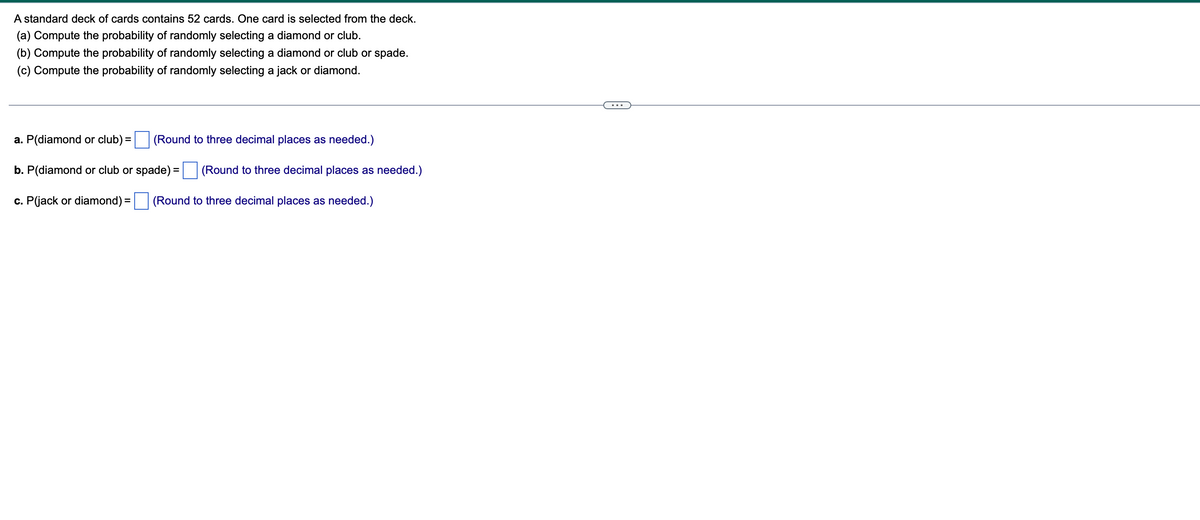a. P(diamond or club) = (Round to three decimal places as needed.) b. P(diamond or club or spade) = (Round to three decimal places as needed.) c. P(jack or diamond) = (Round to three decimal places as needed.)
a. P(diamond or club) = (Round to three decimal places as needed.) b. P(diamond or club or spade) = (Round to three decimal places as needed.) c. P(jack or diamond) = (Round to three decimal places as needed.)
Chapter8: Sequences, Series,and Probability
Section8.7: Probability
Problem 4ECP: Show that the probability of drawing a club at random from a standard deck of 52 playing cards is...
Related questions
Question
100%

Transcribed Image Text:A standard deck of cards contains 52 cards. One card is selected from the deck.
(a) Compute the probability of randomly selecting a diamond or club.
(b) Compute the probability of randomly selecting a diamond or club or spade.
(c) Compute the probability of randomly selecting a jack or diamond.
(Round to three decimal places as needed.)
a. P(diamond or club) =
b. P(diamond or club or spade) =
c. P(jack or diamond) =
(Round to three decimal places as needed.)
(Round to three decimal places as needed.)
Expert Solution
This question has been solved!
Explore an expertly crafted, step-by-step solution for a thorough understanding of key concepts.
Step by step
Solved in 2 steps with 2 images

Recommended textbooks for you

